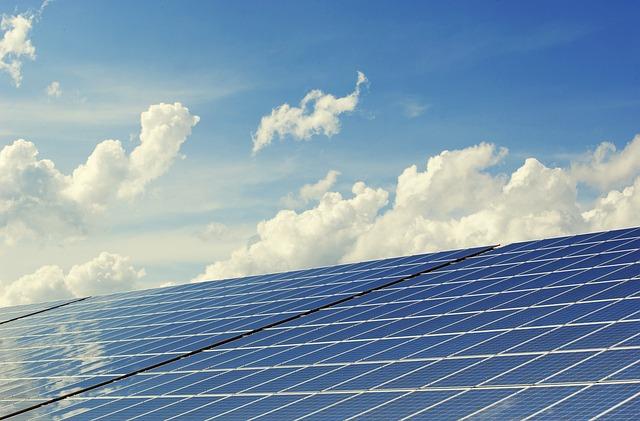In the sun-drenched future of renewable energy, solar power stands as a beacon of sustainability, promising to illuminate our homes and power our lives with the limitless energy of the sun. As more households and businesses invest in solar systems, the allure of reducing electricity bills and shrinking carbon footprints grows ever stronger. Yet, nestled within this bright promise is a shadowy question that often goes unasked: are we underestimating the true cost of maintaining these solar systems? While the initial investment and installation costs are frequently discussed, the ongoing maintenance expenses tend to hover in the background, quietly demanding our attention. This article delves into the often-overlooked realm of solar system maintenance costs, exploring whether our sunny optimism might be clouding the reality of keeping these systems in peak condition.
Understanding the True Cost of Solar System Maintenance
When considering the adoption of solar energy, the focus often gravitates towards the initial investment and potential savings on electricity bills. However, a comprehensive understanding of maintenance costs is crucial to accurately assess the financial implications of solar systems. Maintenance costs can vary significantly depending on several factors:
- Geographical Location: Regions with harsh weather conditions may demand more frequent maintenance to address wear and tear.
- System Complexity: Larger or more complex systems might incur higher costs due to the need for specialized technicians.
- Component Quality: Lower-quality components may lead to increased maintenance and replacement costs over time.
While solar systems are generally low-maintenance, it is essential to factor in periodic cleaning, inspections, and potential repairs. By acknowledging these often overlooked costs, homeowners and businesses can make more informed decisions, ensuring that the promise of solar energy translates into real economic and environmental benefits.

Hidden Expenses: What Homeowners Often Overlook
- Replacement Costs: While solar panels are designed to last for decades, components such as inverters and batteries may need replacing every 5-10 years. These replacements can add unexpected costs to your maintenance budget.
- Cleaning and Maintenance: Dust, bird droppings, and leaves can significantly reduce the efficiency of solar panels. Regular cleaning, which might require professional services, ensures optimal performance but can be a hidden expense.
- Roof Repairs: Installing solar panels often necessitates drilling into the roof, which can lead to potential leaks or structural issues over time. Homeowners might face unplanned repair costs if these issues arise.
- Monitoring Systems: Investing in monitoring systems to track the performance of your solar installation is often overlooked. While these systems help in maximizing efficiency, they also contribute to additional costs.
- Insurance Adjustments: Adding solar panels can increase the replacement value of your home, potentially leading to higher insurance premiums. This adjustment is crucial but frequently underestimated.
While the initial allure of solar systems is their promise of reducing energy bills and promoting sustainability, homeowners must be aware of these potential hidden expenses. A comprehensive understanding and preparation for these costs can ensure that the solar investment remains beneficial in the long run.

Expert Insights: Navigating the Complexities of Solar Maintenance
When it comes to solar energy systems, the conversation often centers around the benefits of renewable energy and cost savings on electricity bills. However, the maintenance aspect is frequently overshadowed by the allure of green energy. Solar systems, like any other complex technology, require regular upkeep to ensure optimal performance. This includes cleaning panels to remove dust and debris, inspecting for potential damage, and checking electrical connections. The costs associated with these tasks can sometimes be underestimated, leading to unexpected expenses for system owners.
- Cleaning and Inspection: Dust accumulation can reduce efficiency, necessitating periodic cleaning.
- Repair Costs: Panels and inverters may need repairs or replacements over time, adding to the long-term costs.
- Monitoring Systems: Advanced monitoring systems can help detect issues early, but they also require regular updates and maintenance.
Understanding the full spectrum of maintenance needs can empower solar system owners to plan more effectively, ensuring that the promise of renewable energy remains both economically viable and environmentally sustainable. As solar technology continues to evolve, it is crucial for industry professionals and homeowners alike to stay informed about the true costs involved in maintaining these systems.

Strategic Recommendations for Managing Solar Maintenance Costs
To effectively manage the financial aspects of maintaining solar systems, it’s crucial to implement a series of strategic recommendations. Firstly, conduct regular and comprehensive audits of your solar installations. This proactive approach can identify potential issues before they escalate into costly repairs. Regular checks ensure that the system operates at peak efficiency, thereby extending its lifespan and minimizing unexpected expenditures.
Furthermore, investing in predictive maintenance technologies can prove to be a cost-effective strategy. These technologies use data analytics and IoT sensors to anticipate potential failures, allowing for timely interventions. Consider the following approaches to optimize maintenance budgets:
- Training and Development: Equip your team with up-to-date training on the latest solar technologies to ensure efficient troubleshooting and repairs.
- Vendor Partnerships: Establish partnerships with reliable vendors who offer competitive pricing and quality service for replacement parts and technical support.
- Warranty Utilization: Maximize the use of warranties for components and installations to offset repair costs.
By adopting these strategies, solar system operators can better control maintenance costs, ensuring the sustainability and economic viability of their solar investments.
In Conclusion
In the ever-evolving dance between innovation and practicality, the question of whether maintenance costs for solar systems are underestimated remains a pivotal one. As we journey through the landscape of renewable energy, it is clear that understanding the full spectrum of expenses associated with solar technology is crucial. By shedding light on these hidden costs, we empower homeowners, businesses, and policymakers to make informed decisions that harmonize with both economic and environmental goals. The sun may offer its energy freely, but the infrastructure that captures its brilliance demands our careful consideration. As we continue to explore and refine solar solutions, let us not only harness the power of the sun but also the power of knowledge, ensuring a sustainable future that is as economically sound as it is environmentally friendly.

































